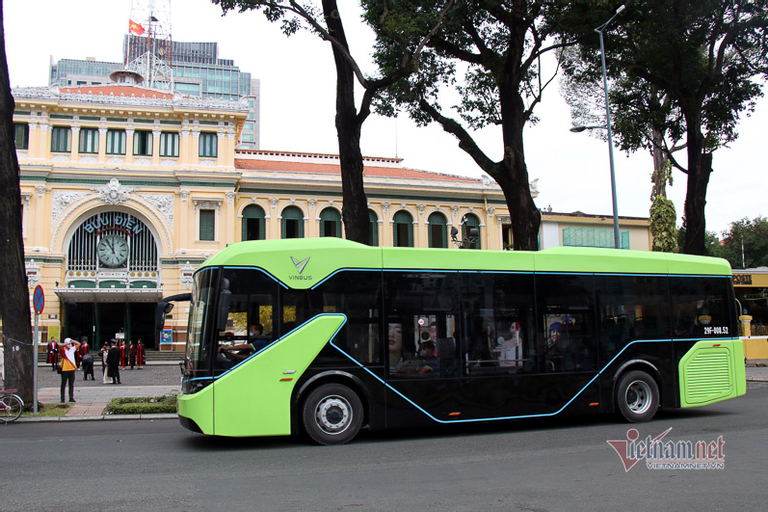
The bus service attracts a high number of passengers as it is convenient and clean, which is different from other bus services. In the first nine months 2023, nearly 29,000 trips were provided, serving 820,000 passengers.
However, the bus route is likely to stop because of heavy losses.
According to VinBus, the investor, the subsidy rate is too low, 44.1 percent, which is just 2/3 of that for buses using diesel and CNG (compressed natural gas). Though the number of passengers has been increasing steadily, the revenue is still not high enough to cover expenses.
As a result, the company has incurred a loss of VND28.6 billion after 1.5 years of operation. It has asked municipal authorities to increase the subsidy rate for electric bus routes from 44.1 percent to 64.8 percent, equal to an average subsidy rate of the bus system in HCM City in 2023.
Prior to that, VinBus planned to open four new electric bus routes, but failed to implement the plan on schedule. According to the HCM City Transport Department, it takes time to follow administrative procedures and to get approval from state management agencies.
Electric buses are not only used in rich countries, but also in many regional countries with tax and fee subsidies in order to step by step replace vehicles using internal combustion engine, and remove carbon in public transport, especially in large cities.
Bangkok, for example, is shifting to use 100 percent of electric buses within three years. It plans to replace existing buses with 3,200 electric buses by 2025. The government is encouraging the development of electric buses by supporting investors to build infrastructure and expand the charging network, and setting the goal of manufacturing 1.2 million electric buses.
Meanwhile, Jakarta plans to put 1,000 electric businesses into use by the end of 2023 and increase the figure to 3,000 by the end of 2025
In Singapore, electric car buyers can receive the financial support of up to 45,000 Singaporean dollars.
The steps taken by the countries aim at accelerating the green economy and circular economy development, adapting to climate change that many countries committed at COP26.
Vietnam has also set a roadmap for the shift to electric vehicles, green energy transition and carbon and methane emission reductions, striving to obtain zero greenhouse gas emissions by 2050.
Under the roadmap, electric buses would account for 45-50 percent of total public transport by 2025 in Hanoi, 25 percent in HCM City, 25-35 percent in Da Nang, 20 percent in Can Tho and 10-15 percent in Hai Phong. The electricity bus proportion must reach 5 percent at least in first-class urban areas. From 2030, the proportion of electric vehicles and green vehicles must be 50 percent at least, while 100 percent of taxis using green fuel.
The goals show the long-term vision towards sustainable development. However, it is not easy to reach these goals. To date, there has been no clear policy on encouraging the development and manufacturing of electric vehicles. People are not encouraged enough to use electric vehicles, except registration for tax remissions.
The public has recently raised its worry about the charging of electric vehicles after a serious fire which caused many deaths. However, agencies have not offered solutions.
Meanwhile, the proposals on giving a subsidy to electric vehicle manufacturers and users and prioritizing the development of charging and parking networks have not been discussed and even have been ignored.
Developing public transport requires huge capital and the receipts are not high enough to cover expenses. Therefore, governments have to subsidize public transport for the common benefit of the community.
In Vietnam, electric vehicles are not popular. It is necessary to encourage investors to maintain and expand bus networks. They can only maintain operation if they don’t take a loss for a long term. Subsidies and other forms of support won’t satisfy everyone, but these will serve the majority of people and help mitigate environmental pollution.
In order to develop green transport, Vietnam should try a new approach – the vehicles which cause higher emissions and higher pollution levels will be taxed higher.
For example, it would be better to impose higher highway tolls and environmental protection fees on vehicles using internal combustion engine, and impose higher registration tax on vehicles with higher cylinder capacity.
Tran Van Tuong